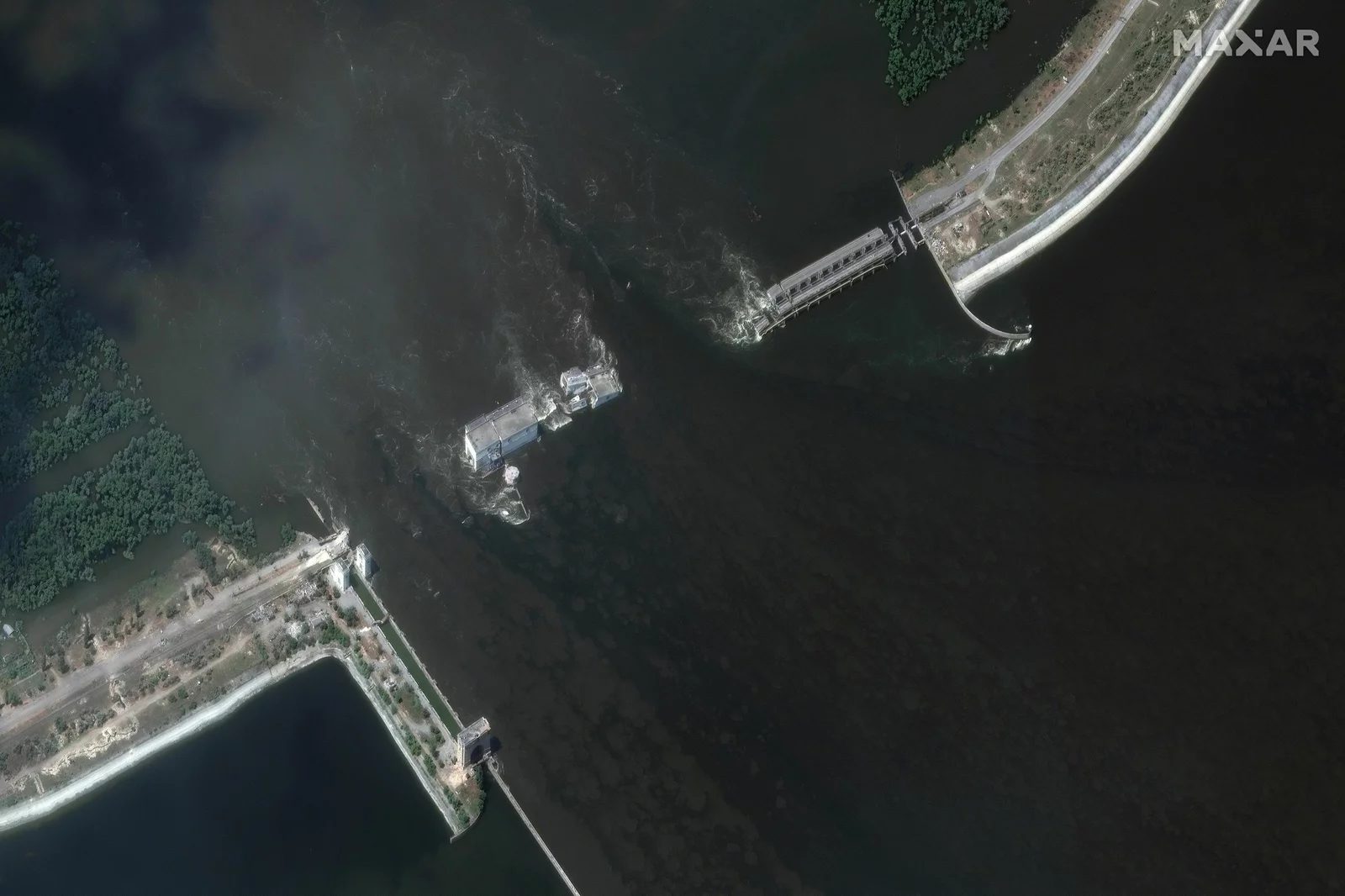FOR IMMEDIATE RELEASE: June 20, 2023
MEDIA CONTACTS:
Josh Klemm, +1 202 492 8904, jklemm@internationalrivers.org (English)
Bonnie Barclay, +1 323 363 4874, bbarclay@internationalrivers.org (English)
Oleksii Vasyliuk, +380 97 100 04 73, vasyliuk@gmail.com (Ukrainian and Russian)
Link to statement in English, Russian, Ukrainian
On Tuesday, Ukraine Nature Conservation Group (UNCG), International Rivers and over twenty other civil society organizations condemned the destruction of the Kakhovka dam and called on officials meeting at the Ukraine Recovery Conference (URC 2023) in London this week to pursue sustainable options to address pressing energy and water needs while restoring natural ecosystems in Ukraine.
“The Kakhovka Hydropower Plant has been deployed as a weapon of mass destruction, causing many deaths and destroying the livelihoods and homes of thousands of people, who are now environmental refugees,” says Oleksii Vasyliuk, Chairman of Ukraine Nature Conservation Group (UNCG). “This ecological catastrophe and large-scale destruction of nature provoked by the Russian invasion are undermining the future well-being of all of Europe.”
Hundreds of thousands of people and over forty protected natural areas have been impacted by the dam’s collapse, while toxic sediments accumulated behind the dam for decades have been unleashed downstream. The deluge has also taken a heavy toll on the natural ecosystems and biodiversity of the unique wetlands and valleys of the Lower Dnieper. “The destruction of the dam represents the most serious single blow to the environment during the war. This is an act of ecocide against the environment and is a crime against humanity,” adds Vasyliuk.
The Kakhovka disaster also serves as a potent reminder of the dangers that dams can pose. Tens of thousands of dams globally are located upstream of populated areas. Many of these dams are aging and have reached the end of their useful lifespans, and are becoming even more vulnerable in the face of climate change. The increasing involvement of dams in conflict zones, from Syria to Iraq, or subject to major disputes on river basins throughout the world, is a gravely concerning trend.
“Unsafe in times of peace, dams constitute a mortal danger in cases of war, violent conflicts and terrorist insurgence,” says Josh Klemm, Co-Director of International Rivers. “The weaponization of dams during wartime represents a real and growing threat.”
Salman Khairalla, Director of the Tigris River Protectors Association in Iraq, adds, “It is alarming to witness the exploitation of water resources and the strategic deployment of dams to threaten the security and well-being of innocent citizens. These actions risk provoking a grave humanitarian and environmental crisis.”
The statement notes that the Kakhovka disaster represents an opportunity to urgently rebuild more sustainably and avoid the inherent dangers and problems of rebuilding the 70-year-old dam and rehabilitating the obsolete plant:
“Rebuilding the dam and its 2000 km2 reservoir would not represent the best path forward given its extraordinary expense, high environmental impacts, climate vulnerability, remaining threat of destruction, and availability of more sustainable solutions,” the statement reads. The organizations called out institutions such as the International Hydropower Association for self-servingly urging that the dam to be rebuilt, which would cost billions.
Pursuing sustainable alternatives would be in accordance with the ‘build back better’ principle in Ukraine’s recovery as endorsed by the European Parliament on 15 June 2023. As the civil society statement notes, solar and wind energy could be readily developed to replace Kakhovka’s energy output for a fraction of the cost and amount of time, and with a much smaller footprint. Meanwhile, steps to restore water supply and irrigation must be undertaken immediately rather than relying on the reservoir, which could take a decade or longer to rebuild.
“We are confident that under conditions of climate change, it will be optimal to restore natural ecosystems on the site of the already emptied water reservoir, which in the past has submerged the largest natural forest in the steppe zone of Ukraine. Restoration of the river flow will not only bring back the stability of natural ecosystems and restore biodiversity lost in the past, but also increase the quality of water used by people, thereby improving the quality of life,” says Oleksii about the vision for the future.
While the hydropower industry is insistent upon restoring the dam, civil society organizations and sustainable energy experts call on those gathered in London to move from what this terrible disaster represents to chart a more sustainable recovery path forward.
Link to the statement in English, Russian, Ukrainian
Feature photo credit: The remains of the Kakhovka Dam as seen by satellite on June 7, 2023. Seismologists claim to have seen an explosive signal around the time of the dam’s collapse. Maxar Technologies

